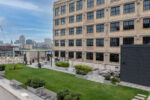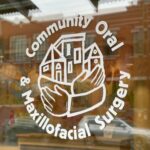Harley-Davidson Museum
400 W Canal St, Milwaukee, WI 53201
Mon-Thur Closed
Fri-Sun 10am-5pm
414.287.2789
People from around the world come to tour the Harley-Davidson Museum. The museum aims to shine a light on the culture and history of constructing motorcycles by means of exhibits that interact with visitors but also teach the expression, companionship, and love that so many people share for motorcycles. There is no collection of Harley-Davidsons that compares with the museums. The campus extends for twenty acres fills the calendar with events and activities. Schedule your tour now to keep an experience for a lifetime!
Haggerty Museum of Art
1234 W Tory Hill St, Milwaukee, WI 53233
Inside Marquette University
Mon-Fri 9am-5pm
Sat & Sun Closed
414.288.1669
In 1889, Reverend Stanislaus L. Lalumiere donated Wilhelm Lamprecht’s “Pere Marquette and the Indians” to Marquette College. In 1959, Dr. John Pick, an English Professor, created the Marquette University Fine Arts Committee. Dr. John Pick sought to spotlight the arts and the artwork of the students as well as the artwork the school had around campus. It wasn’t until almost 1980 when the chair of the Fine Arts Committee, Dr. Curtis L. Carter, teamed up with the recently established Marquette University Women’s Council to find a designated spot for the Marquette art collection. On November 11th, 1984, The Haggerty Museum of Art opened its doors to the public.
Milwaukee Public Museum
800 W Wells St, Milwaukee, WI 53233
Mon-Wed Closed
Thur-Sun 10am-5pm
414.278.2728
The Milwaukee Public Museum wants to get the gears turning in young minds and to develop a sense of preservation and protection for our world’s natural and cultural diversity. With the aid of educational programs, exciting exhibitions, collections, and research, the museum can successfully raise children to be responsible adults and global thinkers. What started out as a German-English Academy in 1851 became the Milwaukee Public Museum on May 24th, 1884. Peter Engelmann, principal of the Academy, pushed teachers to take their students on field trips to collect organic, geological, and archaeological samples. These samples were housed at the Academy until 1857 when the collection became so large Engelmann created a natural history society to be in charge of the collection and keep it growing. The collection started being referred to as “The Museum” and became so large the society was no longer able to keep up with it. City alderman and national history society member, August Stirn, formed legislation to give the collection over to the City of Milwaukee and do whatever they had to do to build “a free public museum.” Today, the Milwaukee Public Museum has over four million samples in its collection.
Milwaukee Art Museum
700 N Art Museum Dr, Milwaukee, WI 53202
Mon-Thur Closed
Fri-Sun 10am-5pm
414.224.3200
The Milwaukee Art Museum has been collecting and preserving art to educate and inspire its visitors for one hundred twenty-five years. The museum is home to thirty thousand pieces of art and accommodates four hundred thousand visitors annually. Founded in 1888, what is now the museum was Milwaukee’s premier art gallery. Today, the three hundred forty-one thousand square-foot museum is a Milwaukee icon and resource for all of Wisconsin. The museum adopted the War Memorial Center designed by Finnish American architect Eero Saarinen in 1957.
Discovery World
500 N Harbor Dr, Milwaukee, WI 53202
Mon & Tue Closed
Wed-Sun 9am-12pm, 1pm-4pm
414.765.9966
Discovery World is home to the Reiman Aquarium and puts innovation, technology, and conservation on display. The one hundred twenty thousand square foot establishment seeks to get children thinking. Milwaukee’s first non-profit science and technology center has dedicated over ten thousand square feet to eight learning labs to teach kids the importance of the Great Lakes and our responsibility to preserve them. Thanks to Milwaukee native Bob Harland’s idea to get children tinkering with technology, we now have what we know of as Discovery World. Harland, a patent attorney, worked with inventors and innovators every day. Harland knew that the people changing the world are the inventors and innovators that also knew how to market their products. Harland had a dream to teach children early on to think outside the box, invent, innovate, and sell their creations to make the world a better place for everyone.




